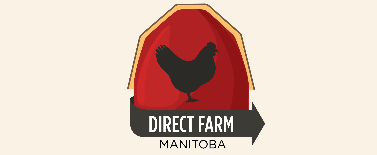Diverting Organic Waste
 Thursday, April 24, 2014 at 11:32AM
Thursday, April 24, 2014 at 11:32AM By Eric Rempel
According to data collected by Green Manitoba, 40% of the waste thrown out by Manitoba families can be recycled, 40% is organic (and easily composted), and only 20% really belongs in the landfill. In its most recent sustainability report, released in 2009, Green Manitoba reported that the tonnage of waste per capita going to landfills is trending up.
Some of us are old enough to remember when the hill, known as Abe's Hill, off Giesbrecht Street barely existed, and there was no “mountain” southeast of Steinbach. We drive past the Steinbach landfill now and are astonished that we could have thrown out so much garbage – stuff that was not garbage when it came into our possession, but became garbage because it was in our possession.
In recent years Steinbach has done well in reducing the tonnage ending up in the landfill. The first rule in reducing waste is to reuse. Each home in Steinbach will approach reuse of “stuff” differently, but as an institution, the Steinbach MCC Thrift Shop is exemplary in facilitating reuse of items. What is particularly encouraging here is the increasing number of young people who find it quite acceptable to dress fashionably in clothing once worn by others.
The second rule in reducing waste is to recycle. Here too, Steinbach has done well. By now the blue box program is well received by almost all households, and little paper, glass, aluminium and plastic ends up in the landfill.
That leaves us with the organic stream. If the Green Manitoba data is to be believed, two thirds of the stuff being hauled to the landfill by Steinbach's garbage trucks is organic. This is bad! First of all, because of hauling costs, it increases our tax bill. Then the presence of the organic material makes the managing the land fill more difficult and costly. The organics reduce the life of the landfill. And there is methane. Organics going into the landfill get buried, and if it gets buried, it decomposes anaerobically. Anaerobic decomposition results in methane, a greenhouse gas. Finally there is the lost fertilizer. Decomposed organic matter is an excellent fertilizer for plant growth. Buried, it is lost.
There has been some progress in diverting organics from the landfill. The many yard care companies currently operating in Steinbach haul the yard waste they collect to the composting area at the landfill. The city operates yard waste collection points on two school yards in the city, and this will be increased to three this summer. More and more schools are separating their organic waste and delivering that to the composting yard. We are making progress. But we have far to go.
Many of us look forward to the summer of 2015 when, we are told, the City of Steinbach will introduce a system of green boxes to parallel the use of blue boxes. The initiation of the green box system will be co-ordinated with an aggressive educational campaign. The goal is not only to divert yard waste for composting, but also kitchen waste as well.
This will be welcome. In the meantime, there is so much we can do as individuals. Education is hardly necessary. We just need to want to!
We each, individually, need to take responsible living seriously.



Reader Comments (1)
Generally organic waste is using for composting and this is very effective and useful all plants. Basically farmers use organic compost to enhance the productivity of plant. It is also responsible for a healthy growth of plant. As it is a long term process, people like to take ready-made compost from market. Before buying this we should know about its composition and use.